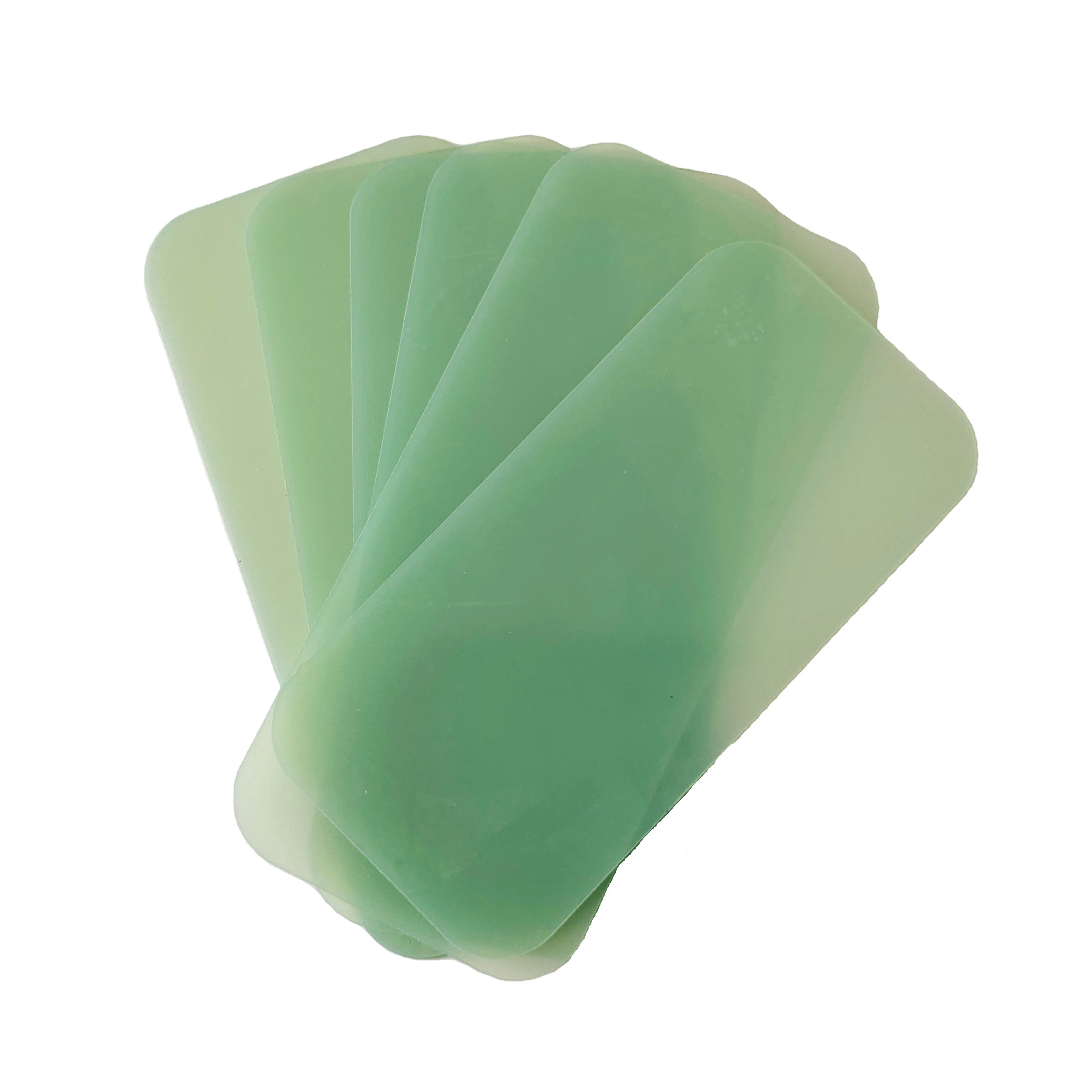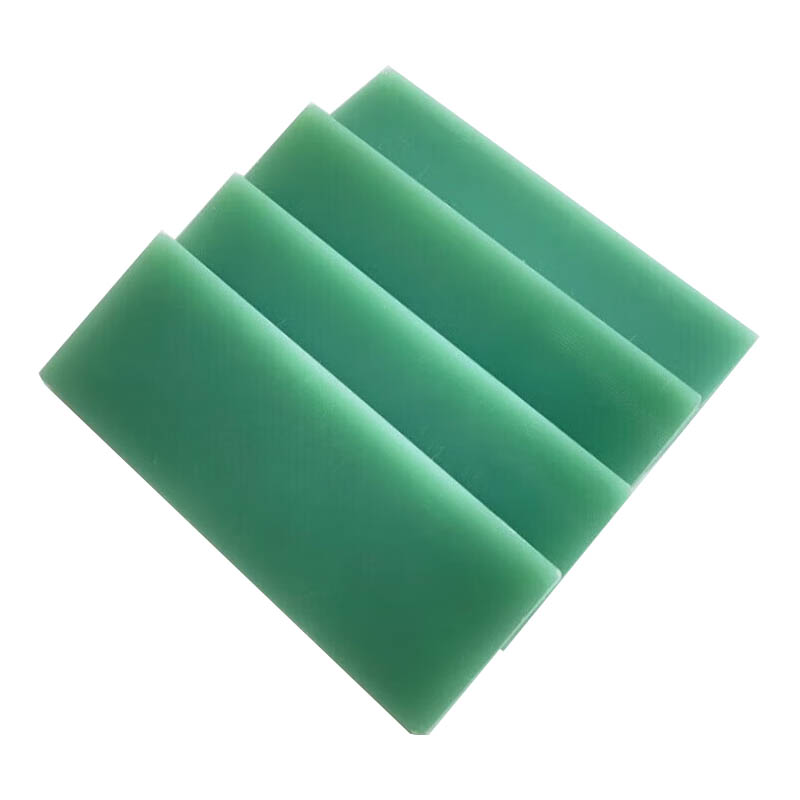What are the limitations of Epoxy FR4?
2024-08-08 14:25:20
Epoxy FR4 is a widely used material in the electronics industry, known for its excellent mechanical strength, electrical insulation properties, and resistance to moisture and chemicals. Despite its many advantages, Epoxy FR4 also has certain limitations that affect its performance and suitability for specific applications. In this blog, we will explore these limitations in detail, as well as ways to address them, providing valuable insights for engineers and manufacturers working with this material.
Thermal Performance Issues
One of the significant limitations of Epoxy FR4 is its thermal performance. While Epoxy FR4 can withstand moderate temperatures, it is not suitable for applications involving high thermal loads. The material has a glass transition temperature (Tg) of around 130-140°C, which means that prolonged exposure to temperatures above this range can lead to degradation of its mechanical and electrical properties.
Heat Resistance
Epoxy FR4's heat resistance is often insufficient for applications that require sustained high-temperature exposure. In environments where components are exposed to continuous high heat, such as in power electronics or high-frequency devices, the material can start to soften, deform, or even break down, leading to potential failures in the system.
Thermal Conductivity
Additionally, the thermal conductivity of Epoxy FR4 is relatively low, which can hinder effective heat dissipation in electronic assemblies. Poor thermal management can result in overheating of components, reducing their lifespan and reliability. Engineers often need to incorporate additional cooling mechanisms, such as heat sinks or thermal vias, to mitigate these issues, which can add to the overall cost and complexity of the design.
Mechanical Limitations
While Epoxy FR4 is known for its mechanical strength, it is not invulnerable to mechanical stresses and strains. Its rigidity can be both an advantage and a disadvantage, depending on the application.
Flexibility and Bendability
Epoxy FR4 is not very flexible, which can be a limitation in applications requiring significant bending or flexing. In flexible printed circuit boards (PCBs), for example, the rigidity of Epoxy FR4 can lead to cracking or delamination under repeated bending or flexing cycles. This makes it less suitable for applications that demand high flexibility and durability under mechanical stress.
Impact Resistance
The impact resistance of Epoxy FR4 is also a concern in environments where mechanical shocks and vibrations are prevalent. While the material can handle moderate impacts, severe or repeated impacts can cause microcracks, leading to potential failure over time. For applications in automotive or aerospace industries, where components are subjected to constant vibrations and shocks, alternative materials with better impact resistance may be preferred.

Environmental and Chemical Limitations
Epoxy FR4's performance can also be affected by certain environmental and chemical factors. While it is generally resistant to moisture and a variety of chemicals, it is not impervious to all environmental conditions.
Moisture Absorption
Epoxy FR4 can absorb moisture over time, which can lead to swelling, warping, and a decrease in its electrical insulation properties. In high-humidity environments, this moisture absorption can compromise the integrity of the PCB and lead to potential failures. Protective coatings or encapsulation can help mitigate this issue, but they add extra steps to the manufacturing process.
Chemical Resistance
Although Epoxy FR4 is resistant to many chemicals, it is not immune to all. Prolonged exposure to strong acids, bases, or solvents can degrade the material, affecting its mechanical and electrical properties. In chemical processing or harsh industrial environments, the material's limitations in chemical resistance must be considered to avoid premature failure.
Addressing the Limitations of Epoxy FR4
While Epoxy FR4 has several limitations, there are effective strategies to mitigate these issues, enhancing its performance and extending its range of applications.
Thermal Performance Solutions
To address thermal performance issues, consider using Epoxy FR4 variants with higher glass transition temperatures (Tg). Advanced formulations can offer Tg values above 150°C, improving heat resistance. For better thermal conductivity, incorporate cooling mechanisms such as heat sinks, thermal vias, and thermal interface materials (TIMs). These additions facilitate efficient heat dissipation, preventing overheating and ensuring the longevity of electronic components. Optimizing PCB design for thermal management is also crucial. This includes strategic component placement, wider copper traces, and thermal planes to enhance heat dissipation.
Mechanical Improvement Techniques
To overcome mechanical limitations, especially flexibility and impact resistance, engineers can use hybrid materials or design techniques. For instance, combining Epoxy FR4 with more flexible substrates can improve bendability without compromising overall strength. In applications prone to mechanical shocks, integrating shock-absorbing materials or coatings can enhance impact resistance. Additionally, designing for reduced mechanical stress by avoiding sharp bends and optimizing component layout can prevent cracking and delamination.
Environmental and Chemical Protection
Mitigating moisture absorption and chemical degradation involves applying protective coatings or encapsulations. Conformal coatings can shield PCBs from moisture, preventing swelling and warping in high-humidity environments. For chemical resistance, selecting coatings compatible with the specific chemical exposures expected in the application can protect Epoxy FR4 from degradation. Regular maintenance and inspections can also help identify early signs of environmental damage, allowing for timely interventions.
Conclusion
Epoxy FR4 is a versatile and widely used material in the electronics industry, offering many benefits such as good mechanical strength, electrical insulation, and resistance to moisture and chemicals. However, it is important to be aware of its limitations, including thermal performance issues, mechanical rigidity, and environmental susceptibilities. By understanding these limitations, engineers and manufacturers can make informed decisions about when and where to use Epoxy FR4, ensuring the reliability and longevity of their electronic assemblies.
If you have any questions or need more information about Epoxy FR4 and its applications, feel free to contact us at info@jhd-material.com. Our team of experts is here to help you with all your insulating sheet needs.
References
1. Kutz, Myer. "Mechanical Engineers' Handbook: Materials and Mechanical Design." John Wiley & Sons, 2015.
2. Reed, Richard. "Advanced Materials for Printed Circuit Boards: A Guide to High-Performance FR4 Laminates." McGraw-Hill, 2017.
3. IPC-4101C: Specification for Base Materials for Rigid and Multilayer Printed Boards." IPC Association Connecting Electronics Industries, 2017.
4. Goldberg, Anatoly. "Thermal Management in Electronics." Springer, 2019.
5. "Conformal Coatings for Electronics Protection: An Overview." IEEE Transactions on Electronics Packaging Manufacturing, vol. 32, no. 3, 2020, pp. 203-211.




.webp)


